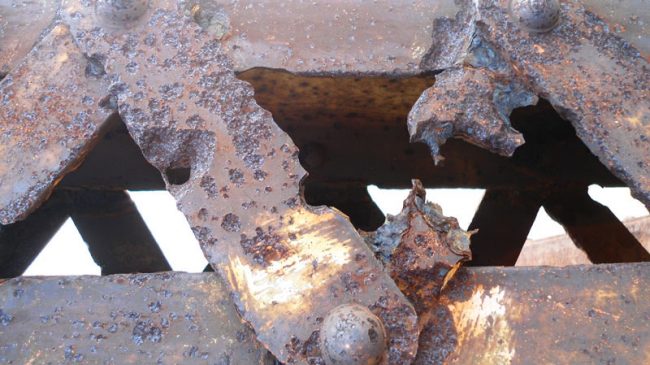We hear many pleas for greatly increased investment in U.S. infrastructure. Although federal and state transportation budgets are limited, infrastructure investment funds, as well as pension funds, are ready, willing, and able to make such investments. Their problem is lack of a serious pipeline of projects to invest in. President Obama each year for the last four or five years has proposed that the federal government spend about a billion dollars a year more on infrastructure-but his pleas have been ignored by Congress, given the lack of a dedicated revenue source.
Perhaps it’s time to take a closer look at how Australia is dealing with this subject. As in this country, most infrastructure down under is the responsibility of the individual states, and they have been taking an active role. But Australia’s federal government is giving them an incentive to do even more. The key concept is what the Aussies call “asset recycling.”
What that means is a state government leases (for 50 to 99 years) existing infrastructure assets (airports, seaports, toll roads, electric utilities, transmission grids, etc.) to investment funds and pension funds-and uses the proceeds for new, greenfield infrastructure. Thus, the asset value that is liberated from existing infrastructure is recycled into much-needed new infrastructure. The assets that are leased are ones with healthy user-fee revenue streams, while the projects into which the proceeds are invested are ones without such revenues: transit systems, schools, other public buildings, etc.
The current wave of asset recycling began in April 2013 with the 99-year lease of Sydney’s Port Kembla and Port Botany for $3.48 billion. After paying off outstanding port bonds, the net proceeds of nearly $3 billion were invested in the New South Wales (NSW) government’s infrastructure fund. Last year NSW leased electricity distributor TransGrid for over $7 billion, generating a net of $4.8 billion. Asset leases upcoming this year include the Port of Melbourne, transmission networks AusGrid and Endeavour Energy, and several other big-ticket items.
Since it views such asset recycling as sound policy, Australia’s federal government has agreed to chip in 15 percent of the budget for greenfield infrastructure projects funded by a state government’s recycled asset proceeds.
John Schmidt of Chicago law firm Mayer Brown has been a lone voice calling for a U.S. adaptation of asset recycling, as a way to jump-start more public-private partnership (P3) infrastructure deals, both greenfield and brownfield. Pension funds and many infrastructure investment funds generally prefer lower-risk brownfield assets with well-established revenue streams. But under current federal tax law, when such an asset is leased via a P3 concession, the existing tax-exempt bonds must be paid off-and the transaction financed with taxable debt. Especially when interest rates return to more normal levels, the interest rate difference imposes a significant “tax” on doing such deals.
So Schmidt’s adaptation of the Australian federal government’s incentive for asset recycling would be to allow tax-exempt debt to be used to finance long-term P3 lease concessions of brownfield infrastructure. As he argued in a piece for InfraAmericas,
“The discrimination against privatized operations with respect to tax-exempt debt is a historical remnant of a time before privatization of these types of assets became commonplace around the world. There is no policy reason for the discrimination. Toll roads and bridges, airports, and ports do not cease to serve their public purpose when they are privatized; in fact, they serve them better with the enhanced quality of service that comes from experienced private management. And allowing continued use of tax-exempt debt in privatized infrastructure would result in no loss to the federal government of taxes on taxable debt interest, since these facilities are using tax-exempt debt now.”
Asset recycling along these lines would free up huge sums of capital for upgrading infrastructure that is either economically or politically unfeasible to charge cost-recovery user fees for. Rebuilding aging subway systems, building replacement Amtrak tunnels under the Hudson River, and replacing aging and obsolete schools and other public buildings would all be candidates for such infrastructure investment.
These projects could be procured as availability-payment concessions, with a state’s asset-proceeds infrastructure fund as the source of those payments. I have been generally skeptical about a large future role for availability-pay concessions, despite appreciating the powerful incentive effects of this procurement method for more cost-effective designs and reduced life-cycle costs. My reason has been that each such project creates a significant liability on the state’s balance sheet, without a source of funds to make good on the promised 30 or 40 years of availability payments. But if a state uses asset recycling to create an infrastructure investment fund for this purpose, that problem is addressed.
Long-term P3 lease concessions of existing airports, highways, bridges, seaports, etc. are not currently on the agenda of most city, state, or public authority governments. Nor has Congress been presented with a good case for allowing tax-exempt debt to be used to refinance such facilities when they are leased via concession. So this is not an idea that is ready for prime time today in April 2016. But if it makes sense-and I think it does-the infrastructure community should shine a spotlight on what Australia is doing, and make the case for doing something similar here.
Asset recycling will create a pipeline of brownfield projects that need modernization, while giving state governments the capital to support a whole new generation of greenfield P3 projects. It should become part of the infrastructure community’s agenda.
Robert Poole is director of transportation at Reason Foundation. This column first appeared in Public Works Financing.

